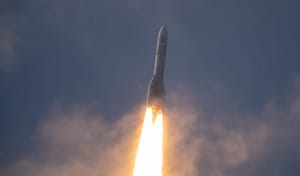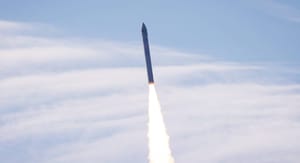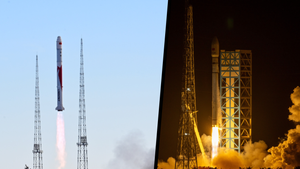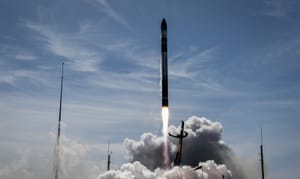
Jul 9, 2024
Ariane 6 spreads its wings for the first time!
Europe has finally returned its domestic access to space with the debut launch of Ariane 6 on July 9th. The first Ariane 6 launch vehicle lifted off from Ensemble de Lancement Ariane 4 (Ariane Launch Complex 4) located at the Guiana Space Centre, in French Guiana in the north of South America, at 16:00 pm French Guiana Time, or 19:00 pm Universal Coordinated time.
Ariane 6's boosters, first-stage Vulcain 2.1 engine, and second-stage Vinci engine all performed as planned to carry the vehicle into low Earth orbit as part of 'Phase 1' of the flight plan, this phase was to demonstrate launch-to-orbit capabilities. 'Phase 2' of the flight saw the Vinci engine re-ignite for the first time, to demonstrate restart capabilities, and to allow the satellites onboard separate, this second burn did not run for its full duration however. Almost three hours into the mission, the European Space Agency confirmed that the launch vehicle's second-stage had suffered from an anomaly with one of its auxiliary propulsion units. At the time of publication, the next steps to solve this issue are unknown.

Ariane 6 carried seventeen payloads, including a handful of CubeSats released from the second stage to orbit, a few experiments that remained attached, and two re-entry capsules released following the final ignition of the Vinci engine. The payloads on board were:
- SpaceCase SC-X01 is a test article for a heat resistance carbon-resin material, the test article will detach from Ariane 6 prior to atmospheric re-entry.
- Nyx Bikini is another re-entry test article, this one however is hoping to prove capabilities on a small scale for ESA's cargo transportation initiative.
- PariSat is an experiment that will observe which materials work best to get rid of heat on orbit.
- Peregrinus is a small experiment that hopes to measure the correlation between Earth’s magnetic field and the intensity of hard X-ray and soft gamma radiation.
- LIFI is another small experiment, this one hopes to prove Li-Fi, Light Fidelity, connections in space.
- SIDLOC is another experiment that hopes to demonstrate a method for spacecraft identification via a small module broadcasting on a broad-spectrum signal deliberately spread out over a large radio bandwidth, via the use of the Doppler effect the experiment hopes to provide accurate tracking of its position from the ground.
- YPSat is a small payload that hopes to record, and transmit, from fairing separation to re-entry of the second-stage, this payload was designed by ESA's Young Professionals group.
- OOV-Cube is a small 'Internet of Things' satellite that hopes to test technology that can be linked to miniaturized transmitters carried by animals and image processing in orbit using Artificial Intelligence.
- Curium One is a small satellite that aims to contribute to CubeSat and amateur radio communities through testing and developing open-source hardware and software.
- RAMI is a CubeSat deployer that will carry a 6U and two 3U CubeSats onboard during the launch, and will deploy them once on orbit.
- ExoPod NOVA is another CubeSat deployer, this one will carry four CubeSats onboard and deploy them on orbit.
- ISTSat is a tiny, 10 centimeters wide, CubeSat that will attempt to receive signals for a system called Automatic Dependent Surveillance Broadcast, which is used by aircraft, ahead of future satellites potentially providing space-baed reception for the system.
- 3Cat-4 is an Earth observation CubeSat developed by graduate and undergraduate students at Universitat Politècnica de Catalunya, in Spain.
- GRBBeta is a CubeSat that will conduct astrophysics research after being separated from Ariane 6, notably attempting to detect gamma-ray bursts.
- ROBUSTA-3 is a CubeSat that is hoping to collect water vapor data over the Mediterranean Sea to improve weather forecasts ahead of severe rain.
- CURIE is a mission from NASA that has two satellites, initially bolted together, that hopes to measure radio waves coming from the Sun and other radio sources in space.
- Replicator is a technology demonstrator that is hoping to test 3D printing on orbit, which may potentially allow for the efficient printing of complex structures due to the lack of gravity.

With today's launch of Ariane 6, the European Space Agency has hopefully finally ended its 'launcher crisis' and returned independent European access to space. This crisis was caused by a combination of issues, including delays in Ariane 6 development, the retirement of Ariane 5, the loss of Soyuz launch vehicles due to deteriorating relations with Russia, and the failure of Vega C in December 2022.
The next Ariane 6 launch is expected before the end of 2024, according to Stéphane Israël of Arianespace. Ariane 6 also has twenty-nine missions in its backlog for launch in the coming years, these missions are for commercial, government, and institutional customers.
What is Ariane 6?
Ariane 6 is ArianeGroup's latest launch vehicle in the Ariane family of rockets, ArianeGroup has been manufacturing and marketing the Ariane launch vehicles on behalf of the European Space Agency since Ariane 4. Two versions of the Ariane 6 rocket will be initially available, Ariane 62 and Ariane 64.
These two versions share the first and second stages. The first stage of Ariane 6 burns liquid hydrogen and liquid oxygen in a single Vulcain 2.1 engine, producing 139 tons of thrust. The second stage of Ariane 6 also burns liquid hydrogen and oxygen, but in a single Vinci engine that generates 18 tons of thrust.
Each of the solid rocket boosters burn a mixture of aluminum and hydroxyl-terminated polybutadiene to produce 474 tons of thrust each. This allows Ariane 62 to generate 1088 tons of thrust at liftoff, while Ariane 64 can generate 2036 tons of thrust.

Ariane 62
Ariane 62 is the cheaper of the two configurations because it opts to use two solid rocket boosters. The lift capacity of Ariane 62 is as follows: 10,350 kilograms to low Earth orbit, 7,200 kilograms to a sun-synchronous orbit, 4,500 kilograms to geostationary transfer orbit, or 3,500 kilograms to a lunar transfer orbit.
On the launch pad, Ariane 62 weighs approximately 530,000 kilograms with a first-stage, second-stage, and faring diameter of 5.4 meters. Ariane 62 stands 56 meters tall ahead of launch.
Ariane 64
Ariane 64 is the more capable of the two configurations due to it opting for four solid rocket boosters. The lift Capacity of Ariane 64 is as follows: 21,650 kilograms to low Earth orbit, 15,500 kilograms to a sun-synchronous orbit, 11,500 kilograms to geostationary transfer orbit, 8,600 kilograms to a lunar transfer orbit, or 5,000 kilograms to geostationary orbit.
On the launch pad, Ariane 62 weighs approximately 860,000 kilograms with a first-stage, second-stage, and faring diameter of 5.4 meters, exactly the same as Ariane 62. Ariane 64 is eight meters taller than Ariane 62 and is 62 meters tall ahead of launch.



